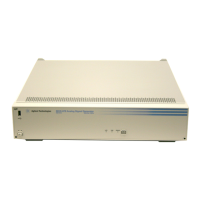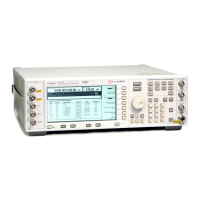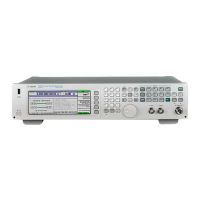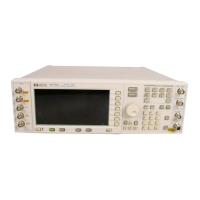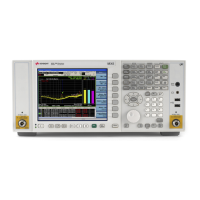ILT.2255
The most probable fault is a loose cable between A30
and the RF OUTPUT connector. Use the block diagram
to guide you in checking power levels between A30 and
the RF OUTPUT connector. Then use the block diagram
to check the following items.
1. The RF OUTPUT connector.
2. If the instrument has option 001, the attenuator
(RF.3190).
3. The bridge detector in all models except the
83623B/24B and 83623L or the coupler/detector in the
83623B/24B and 83623L (RF.3090).
4. The low power adjustment.
5. For
abrupt power drop out only
, amplier/multiplier
and amplier/lter adjustments.
6. The amp/multiplier (RF.2890).
7. The amp/lter (RF.2990).
8. If present, the amp/switch (RF.3390).
9. If present, the pulse modulation switched lter
(RF.4290).
If these alternatives do not x the problem, use
the instrument block diagram (located behind the
\Troubleshooting Block Diagrams" tab) to troubleshoot
this problem.
ILT.2256
A general power level problem exists. The assemblies
that aect a broad band of frequencies start with the
coupler/detector, and end with J1. If a power level
accuracy problem exists, it is possible that the A10
assembly (ALC) is faulty. There is no easy and eective
way to continue testing without additional equipment.
The following is a prioritized list of the most probable
causes:
1. For power measurement level accuracy only, the A10
assembly (A10.9000).
2. The RF OUTPUT connector.
3. Hard lines between the A30 assembly and the RF
OUTPUT connector.
4. If the instrument has option 001, the attenuator
(RF.3190).
Agilent 8360 Instrument Level Troubleshooting 1a-39

